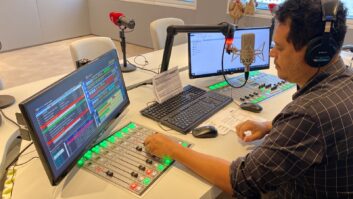 Tag Borland is president of Logitek Electronic Systems.
Tag Borland is president of Logitek Electronic Systems.
Radio World: What’s the most important trend in design of consoles right now?
Tag Borland: As AoIP becomes more standards-compliant, equipment in general will have an Ethernet port on the back in place of analog and digital connections. Looking ahead the next 5 to 10 years, there will be fewer node boxes between consoles and equipment and more things that just go to an Ethernet switch. For the things that don’t have an Ethernet jack on the back, there will be smaller and cheaper ways to convert audio to the network.
RW: As a console manufacturer, what needs do you hear from buyers today that are different from 10 or 15 years ago?
Borland: Honestly, with the state of radio revenues over the past 10 years being what they are, radio is looking for value. Anything that eliminates wiring or another box somewhere is of interest. Manufacturers are cramming more functions into each product in order to stay relevant.
Also, the push for standards means you’re no longer locked into one manufacturer’s ecosystem. That’s good for everybody.
RW: What functions and features are offered on new models that engineers who haven’t bought a console in a while should know about?
Borland: Most digital consoles are now digital routers as well. When coming up with the right size console for a studio, it’s important to count how many sources will be used at one rather than how many total sources there are. With most playout systems simplified down to one or two faders and CD players becoming a relic of the past, the sweet spot for even some large stations is 10 to 12 faders.
RW: What will the console of the future look like, if we use one at all?
Borland: While Logitek has been making virtual consoles for close to 20 years, there’s always going to be a need for some physical hardware in a radio studio. As long as there’s a person in a radio studio doing a live show, you need controls that a person can feel because their eyes aren’t on the console — they’re either focused on reading copy or making eye contact with someone they’re talking to.
That’s why even as we’ve brought touchscreens into all of our consoles, we’ve kept faders and on/off buttons as things you can operate by feel.












